Indian weapons in the US Metropolitan Museum (part of 4)
So with respect to Indian weapons, the Metropolitan Museum has collected not only an impressive collection of Indian weapons (as well as Japanese, Tibetan, Chinese, knightly armor ...), but also very skillfully laid out his photographs. Of course, it would be more interesting and more useful to write in detail when this or that type of weapon appeared, how it was used, but ... agree that this is work for a whole multi-page monograph. Therefore, let's start by simply looking at what this museum has (and not only it, for the sake of completing the disclosure of the topic), and then ... maybe someone “young” will be engaged in this later ?!
Well, it’s best to start with sabers, because they ... are truly beautiful!
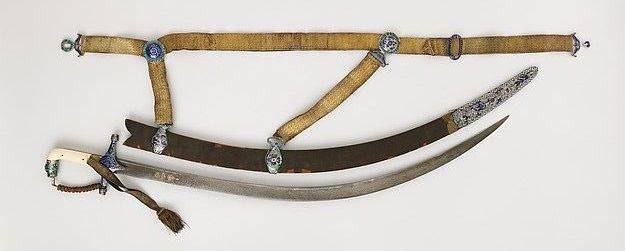
1. Here is the Shemshire saber of the Indo-Iranian pattern, the blade of which dates from 1748 – 1749 or 1750 – 1751. The blade of Iran, the scabbard and sling - Indian.
2. Shemshir from Persia (about 1800), but could well be used in India, especially since it was made from Indian Bulat. Absolutely luxurious thing: small pearls are inserted into the slot, the finish is made with enamel, gold, emeralds, “fish skin”, ivory handle.
3. Turkish Klych or Kylych. The blade dates from 1550 – 1551. Again, the range of such blades was very wide, they are in the Kremlin Armory (the sword of Prince Mstislavsky), there are in museums in India.
4.Sword from Tibet, XVIII - XIX centuries. Moreover, it was from Tibet, where “real knights” were seen back in 1935 and even later.
5. Pat XVIII century. - a very interesting Indian sword, the blade of which was a continuation of the steel "gloves". "Capacity" for a fist is framed in the form of the head of a toothy monster, whose head in turn protrudes an elephant's head. His tusks serve to prevent the blade of the enemy from slipping off his arm. How they fought with such "swords", because at the same time completely different muscle groups were straining, it is not easy to imagine. One thing can be said with certainty: it needed a lot to learn. The one who used to fight with a saber, he just couldn’t go on a stalemate!

6. The sword of Bhutan - the kingdom near Nepal, XVIII - XIX centuries.
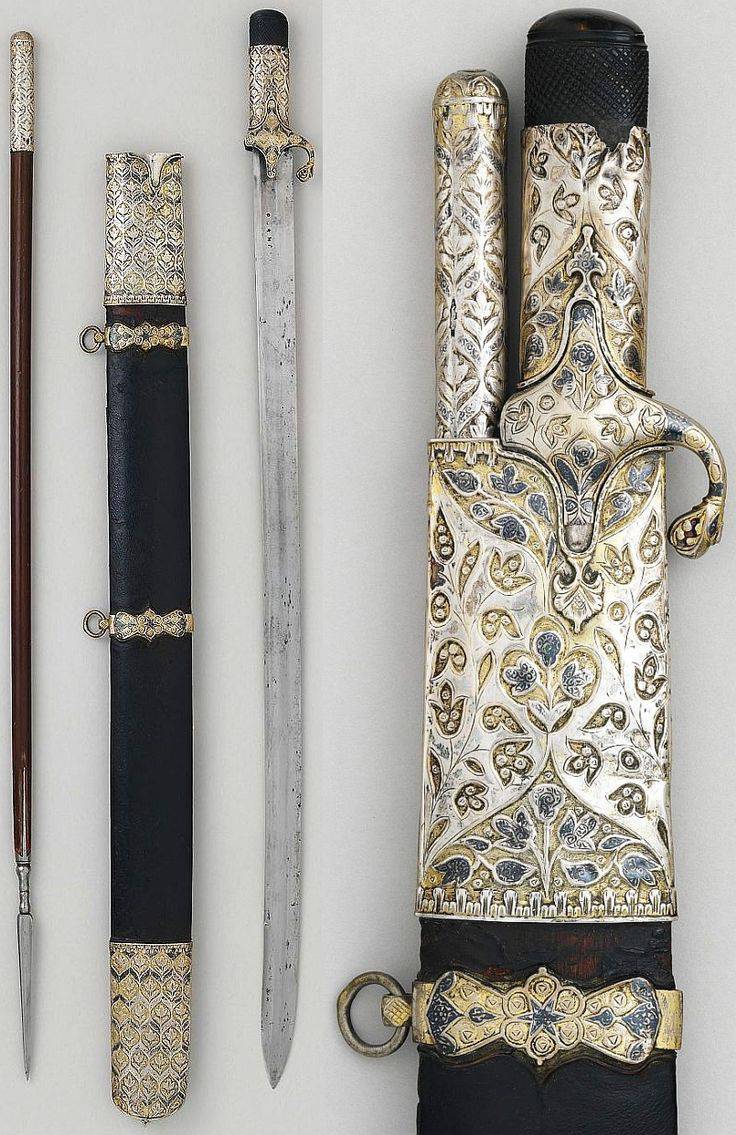
7. 18th century Turkish saber with a secret - sheathed dart tank. Finish: silver, black, leather. The length of the blade 58.42, see. Very popular in the East weapon.
8. Turkish Sinzhal with a “flaming blade” in the Malay kris style and onyx handle decorated with gold and rubies. The scabbard is decorated with a silver filigree and large emeralds. XIX century. Length 56.5 cm. Total weight 396.9 g.
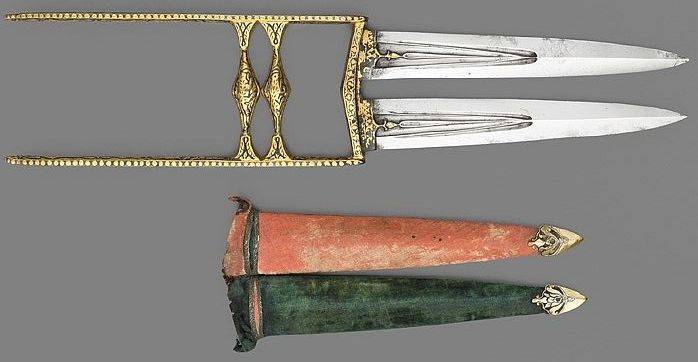
9. Double coutar from the 19th century British Wallace collection The British, too, as you can see, give their artifacts well, but the Americans have almost more of them! The length of the blades 18.4 cm.
10. L-shaped cutar with two blades and hand guard, XVIII century Weight 575.5
11. T-shaped cutar with three blades, XVI - XVII centuries. Weight 802.3
12. Kutar from South India with three blades of European production. Length 53.7 cm. Weight 677.6 g.
13. Coutar with sliding blades of the “scissors” type, XVIII - XIX centuries Length 48.9 cm. Weight 864.7 g.
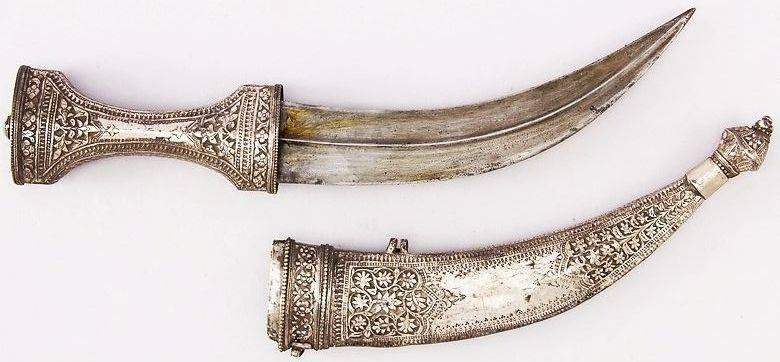
14. Jambia. Turkey, XIX century. Weight 507.5 g .; 229.6 sheath weight
15.Indian dagger XIX century. 46.7 length cm. Weight 430.9 g .; 280.7 sheath weight
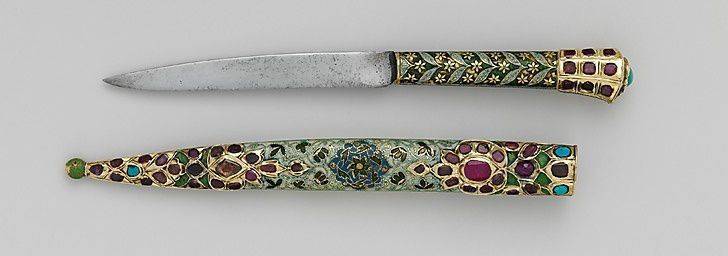
16. Indian dagger XVIII. Finishing: shark skin, gold, silver, emeralds, rubies, sapphires.
17. Indian dagger Hajarli XVII - XVIII centuries. Length 29.2 cm. Weight 266.5 g.
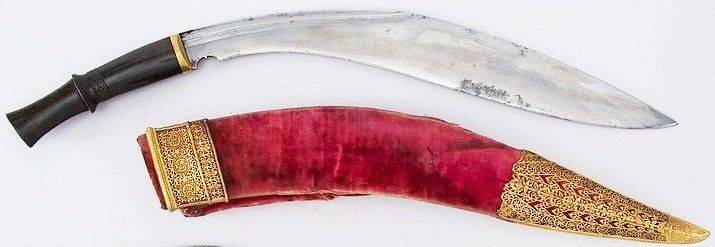
18. Indian or Nepali kukri XVIII - XIX centuries. Length 44.1 cm. Weight 396.9 g.
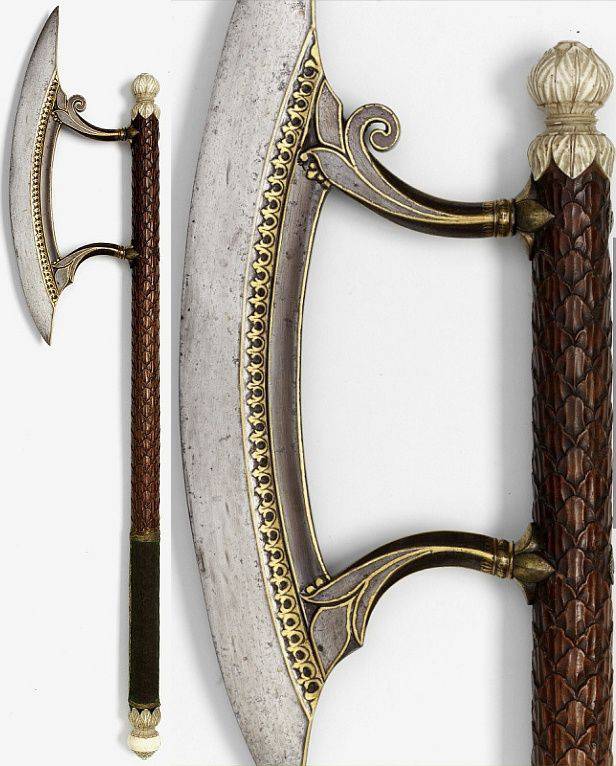
19. Indian ax from the Royal Arsenal from Leeds in England.
20. Indian battle ax Tabar, XIX century A blade is inserted into the handle, which, if necessary, can be removed and put into operation. 56 length cm; dagger length xnumx see
21. Zagnol "raven beak" XVIII - XIX centuries. Length 70, 5 cm. Blade length 13, 5 cm.
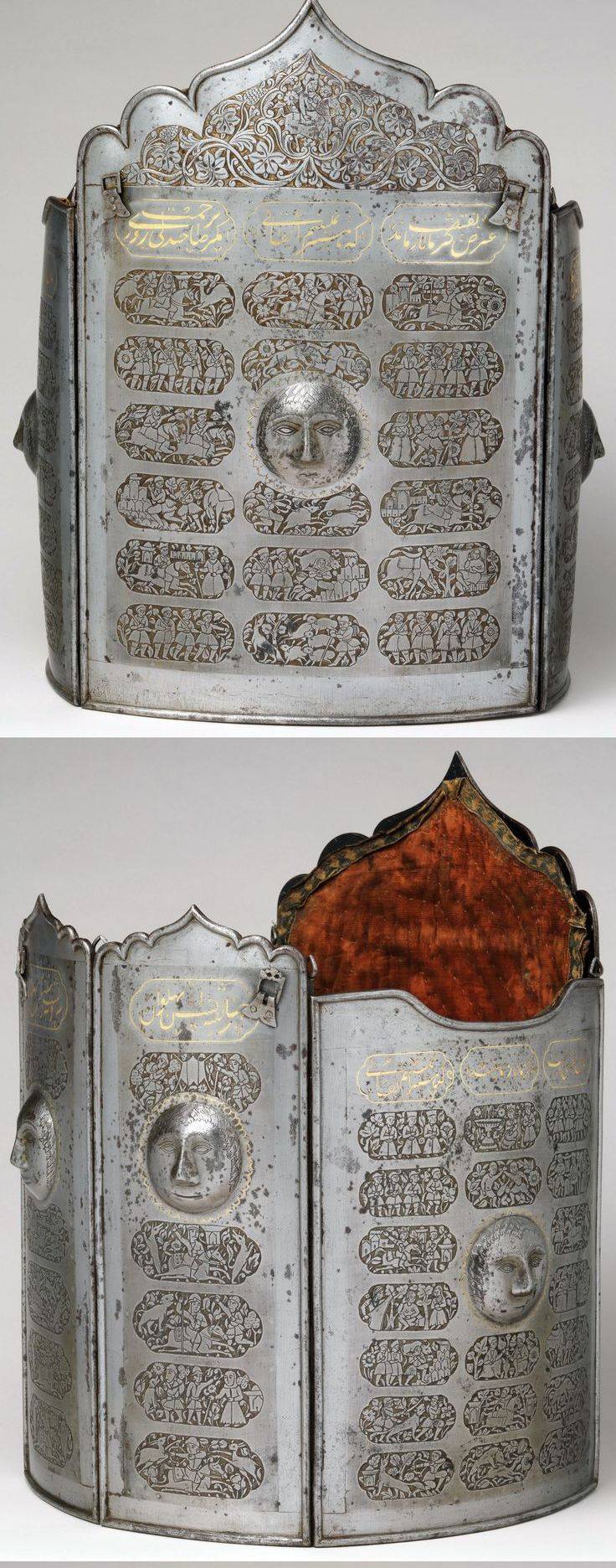
22. Charayna - “four mirrors”, XVIII century. Appeared in Persia in the XVI century.
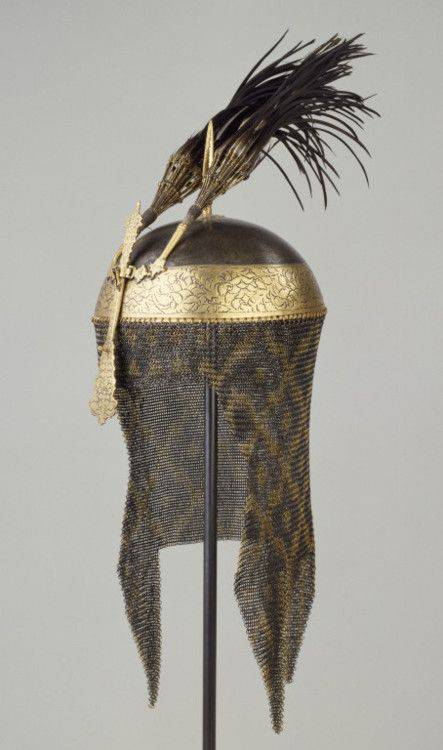
23. Mughal helmet, India, XVIII century. Victoria and Albert Museum, London.
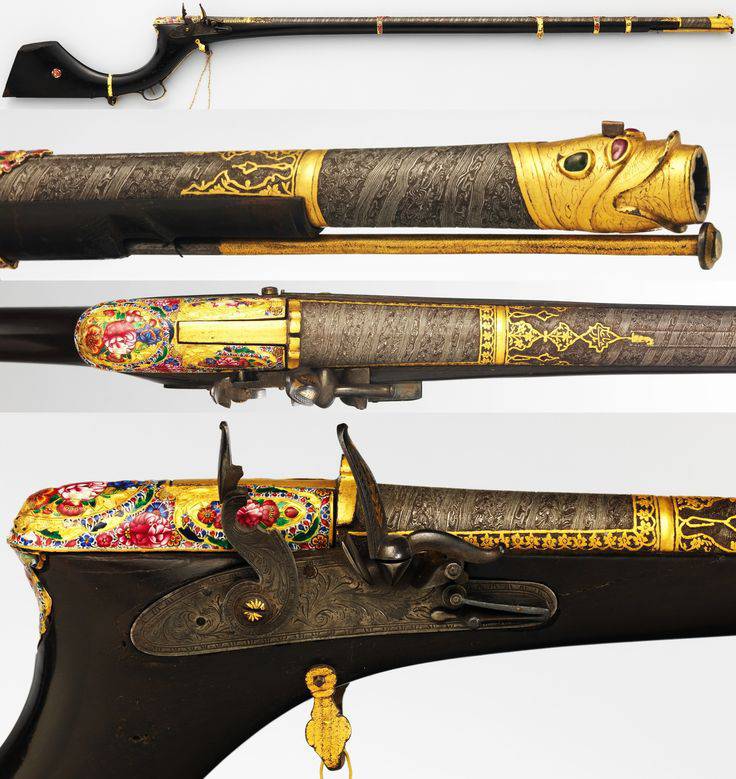
24. Indian musket 1835 g., Castle British. Caliber 13.97-mm. Weight 4366 d. Length 149.86 cm. Length barrel 108.59 cm. Twisted Damascus barrel.
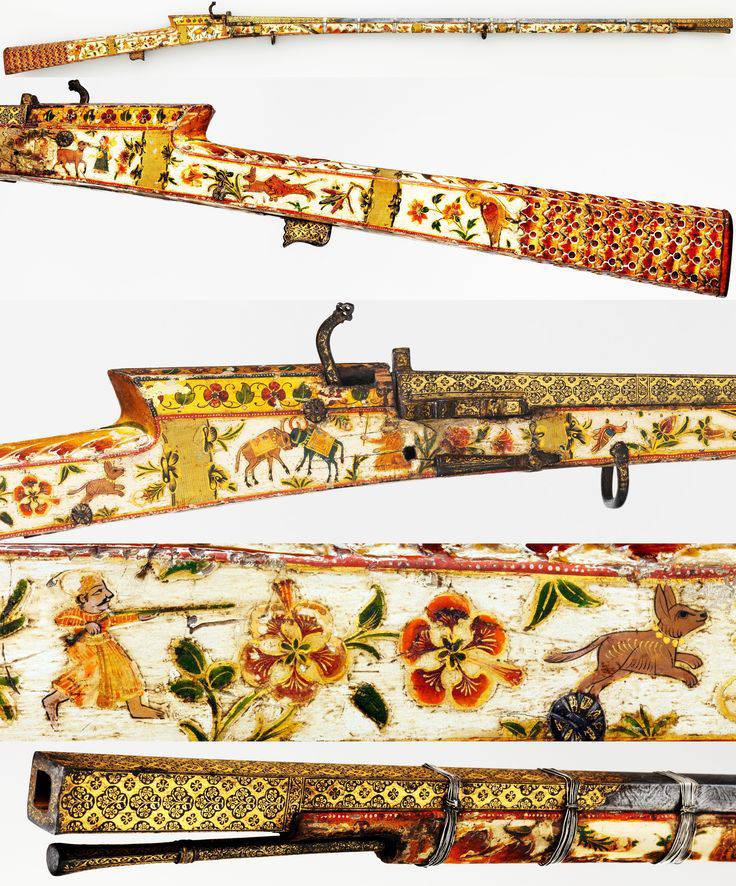
25. XVIII century Indian musket Length xnumx see
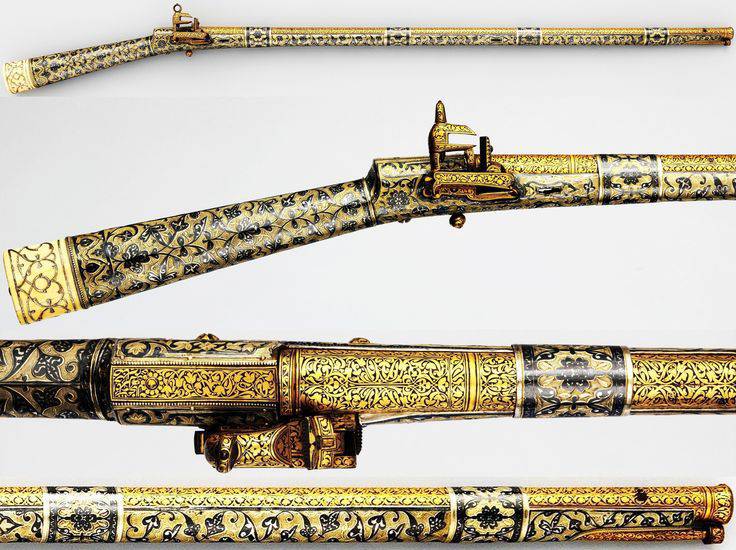
26. For comparison, our musket from Dagestan, Kubachi work approx. 1800 –1850 Caliber 14.22-mm. The length of 132.08, see the Arabic inscription on the trunk says: "Belongs to Abu Muslim Khan Shamhal."

27. And this is a visible example of the interpenetration of cultures: the blade from the Turkish klych, and the handle from the Indian talvar.
Well, here we touched, and very superficially, the theme of the national Indian weapons and one conclusion: if you understand it thoroughly, then it will need to spend a lot of effort, time and money! After all, even only one talvaram information sea. Different blades, different handles, depending on time, region — more barrel-shaped or less, with or without a shackle, design styles — to study and study in one word. Even to view them in the collection of the Metropolitan Museum, and then you need a lot of time, and yet there are museums in New Delhi, Hyderabad, Mumbai. That is, it is desirable to know English and ... at least Hindi, well, to visit India is also very desirable. So this is an interesting thing, but difficult and expensive!
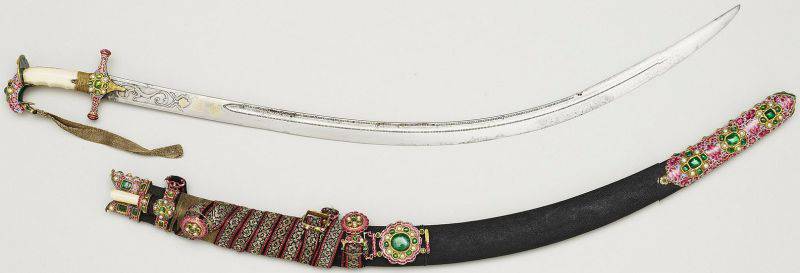
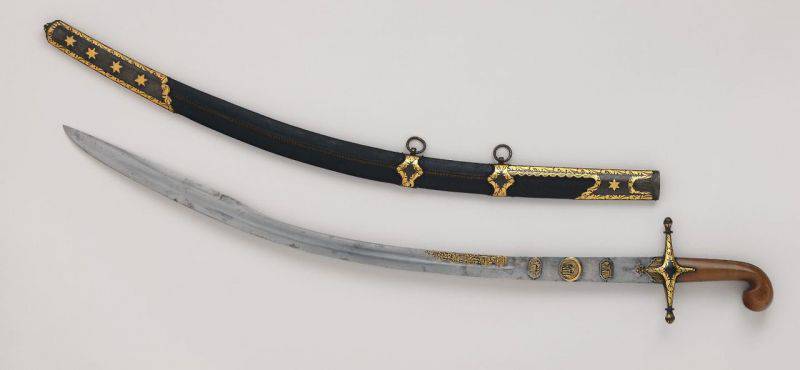
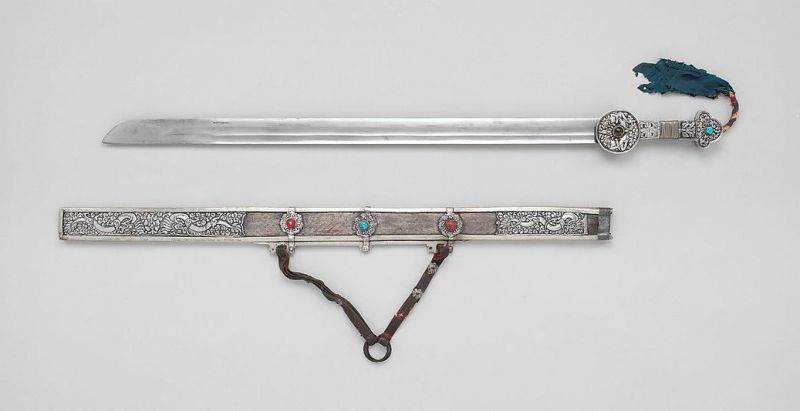
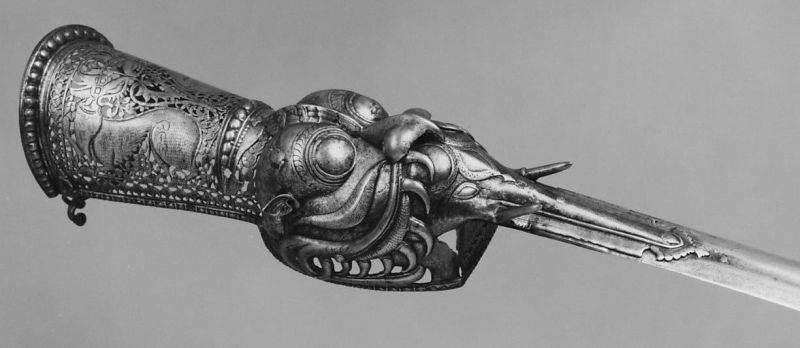

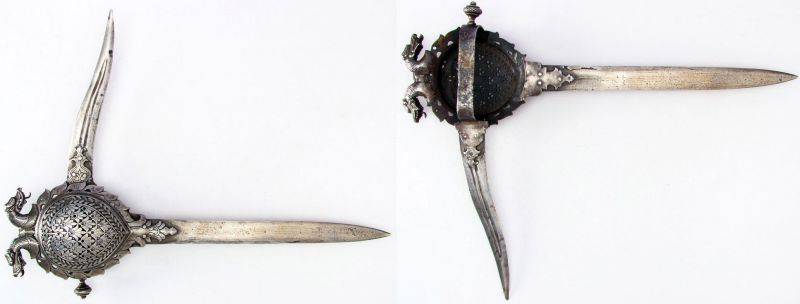
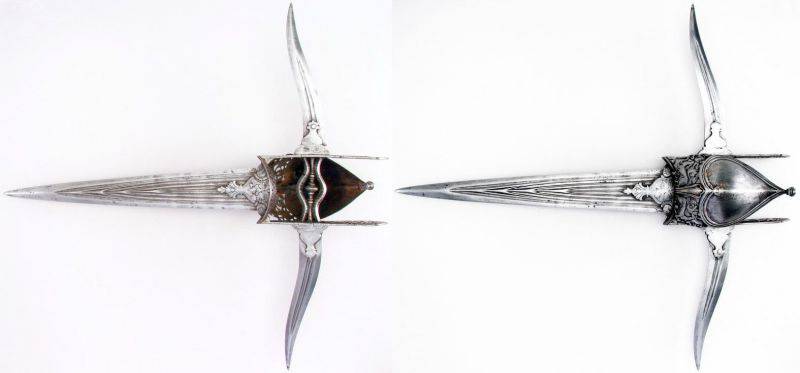
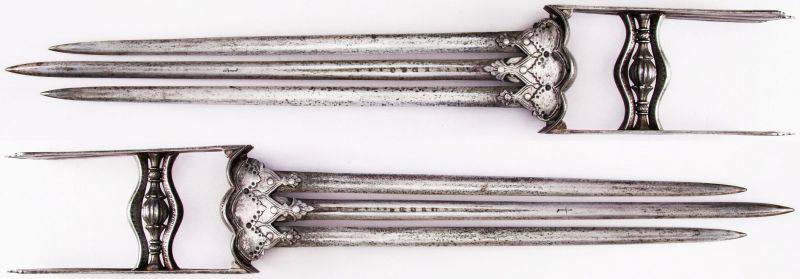
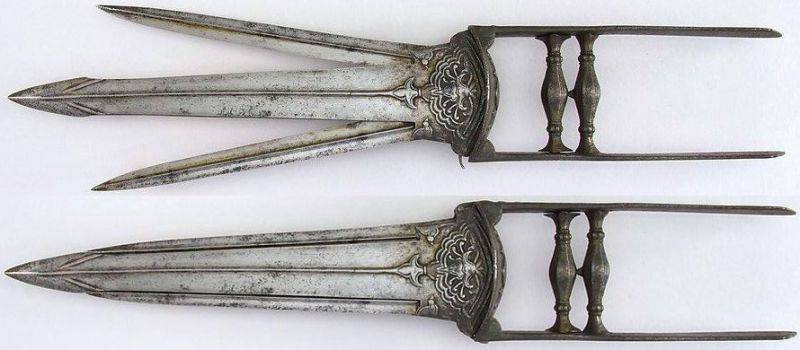

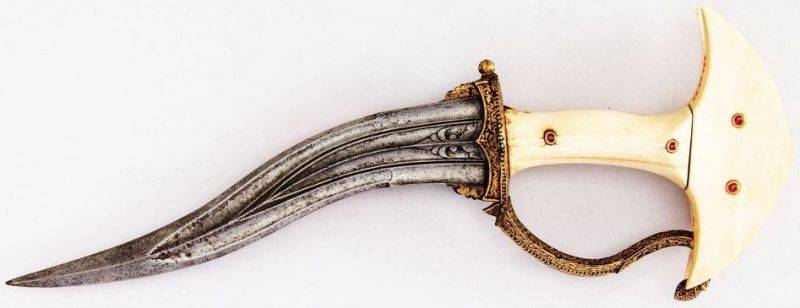
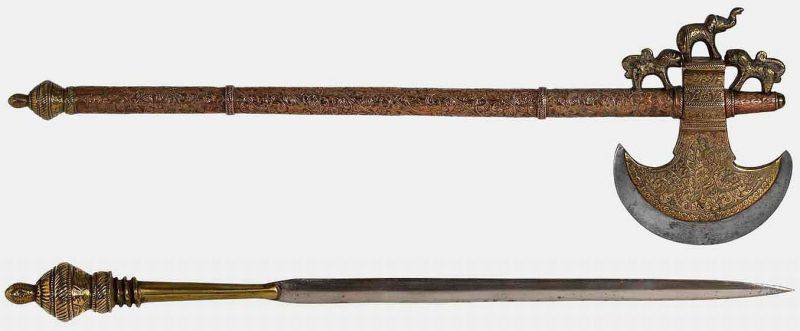

Information